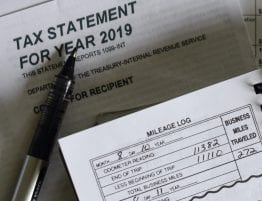
It is not always that taxpayers get into tax debt because they do not pay their full tax liability. Sometimes, claiming false tax credits can cause a tax debt. Though credits reduce the overall tax liability of a taxpayer, each credit has qualifying criteria that need to be met. Claiming false credits on a return can increase the total tax bill of a taxpayer when the IRS discovers and removes the wrong credit(s). This can not only lead to tax debt, but may also attract an audit by the IRS.
Refundable and Non-refundable Tax Credits
Some tax credits are refundable, which means that it will get the taxpayer a refund if the amount of credit is more than the tax owed. For example, if a taxpayer owes $1,000 in tax and the claim a refundable credit of $1,200, then s/he will receive a refund of $200, if the tax credit is fully refundable. There are partially refundable tax credits as well that offer a lower refundable amount than what the tax credit is worth. Some of the refundable tax credits are the Earned Income Tax Credit, Additional Child Care Tax Credit, Health Coverage Tax Credit, Premium Tax Credit, and American Opportunity Tax Credit.
Non-refundable tax credits only cover your tax liability and do not convert into a refund. If you owe $1,000 in tax and apply non-refundable tax credit of $1,200, then it will lower your tax bill to zero, but will not get you a refund of $200. Child Tax Credit, Lifetime Learning Credit, Energy Tax Credit, Child and Dependent Care Tax Credit, and Adoption Credit are non-refundable tax credits.
Usually, taxpayers claiming large credits or too many credits on their return rouse the suspicion of the IRS. Fraudulent return preparers often encourage taxpayers to claim false credits in order to reduce their tax bill, or they claim false credits without the knowledge of the taxpayer. Therefore, before filing, taxpayers may review their return and ask the preparer about information contained in it that they do not understand. Since the taxpayer signs the return, the IRS holds the taxpayer responsible for the information contained in it.
How Tax Debt is Incurred
Non-payment of taxes by the due date of payment results in tax debt. If the IRS discovers after the tax season that the taxpayer has not paid the full amount of taxes owed, which can be due to the claiming of false credits or any other reason, they will send a notice requesting payment. If a taxpayer is unable to pay the full unpaid taxes by the deadline on the notice, the IRS may begin collection actions such as a tax lien (seizing of property and/or assets) and proceed to a levy (the actual selling of the seized property and/or assets) in order to fulfill the tax debt.
To avoid such aggressive collection actions of the IRS, taxpayers can use IRS tax debt resolution plans offered to taxpayers of different financial capabilities. There are payment plans such as Installment Agreements and Offer in Compromise that allow payment in installments or payment of a reduced amount respectively. Taxpayers may note that tax debt keeps increasing with time due to IRS interest and penalties.
How Tax Debt and Credit Overlap
Some taxpayers claim false tax credits so as to reduce their tax bill to zero or to get bigger refunds. In either case, they risk owing back taxes once the IRS removes the false tax credits claimed on the return. The IRS uses the refund of a taxpayer to pay back taxes, if any. If the refund amount is insufficient to fulfill the entire tax debt, the IRS then sends a notice/letter to the taxpayer requesting payment of the remaining amount due.
The inverse is also true. There are cases where taxpayers do not file a return because they cannot pay their tax bill. By doing that, they miss out on the tax credits they qualify for which could have given them a refund or reduced their tax liability. By not filing, they incur tax debt and lose the refund amount as well.
Conclusion
Though taxpayers may check their eligibility before claiming credits and deductions to avoid false claims on their return, not all is lost even if they face a tax debt after the filing season. There are a variety of IRS resolution options available to taxpayers using which they can get back into compliance.









